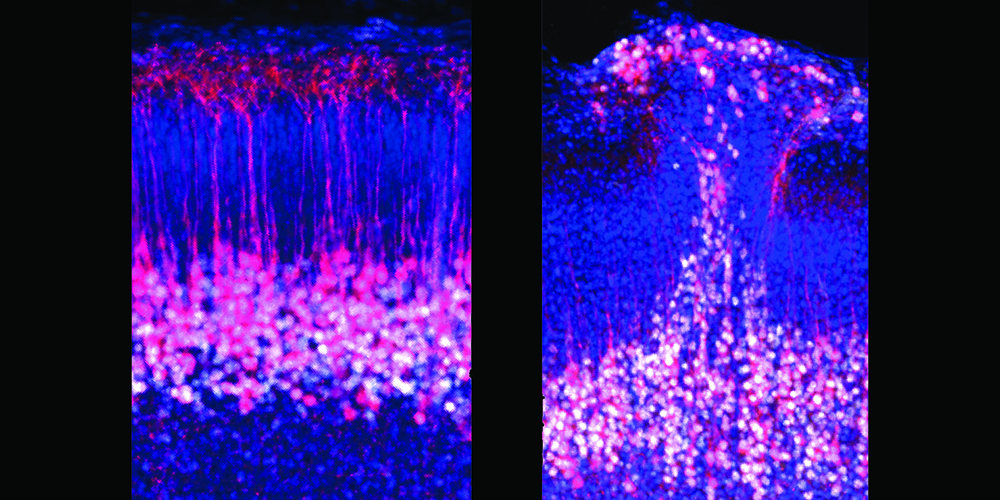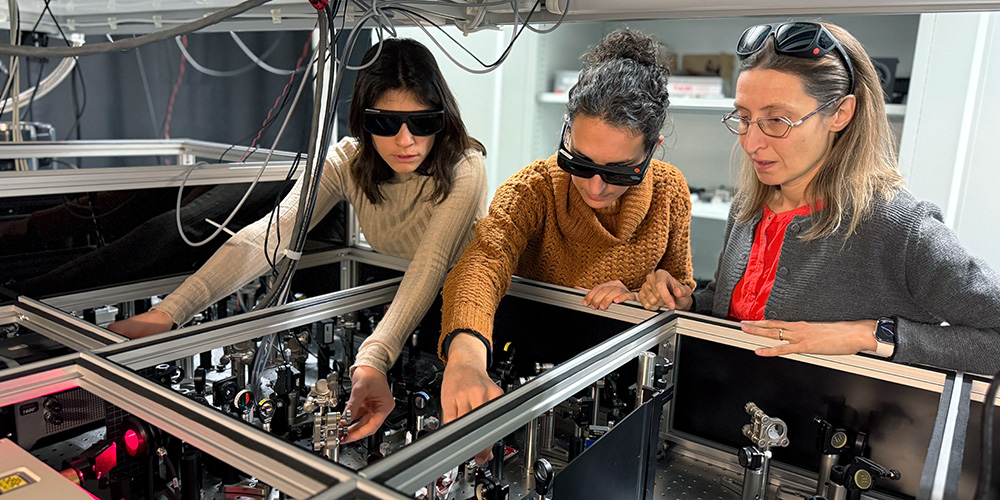New embryonic brain circuit discovered
Researchers have identified a new brain circuit in mouse embryos that develops at an unexpectedly early stage. Their findings may provide new insights into circuit abnormalities in autism.
18 April 2023
A research team led by Professor Botond Roska at the Institute of Molecular and Clinical Ophthalmology Basel (IOB) and the University of Basel has studied circuits in the brains of living mouse embyros. They discovered a previously unknown, early active circuit in the cerebral cortex. Genetic disruption of this circuit leads to changes similar to those seen in brains of people with autism. The team reports these findings in the scientific journal "Cell".
Autism has long been associated with faulty circuits in the cortex, which is the part of the brain that governs sensory perception, cognition, and other high-order functions. Most of the cortex is composed of excitatory cells called pyramidal neurons. The reeesearch team studied when and how these neurons assemble into the first active circuits in the cortex.
“Understanding the detailed development of cell types and circuits in the cortex can provide important insights into autism and other neurodevelopmental diseases,” says Botond Roska, Director at IOB and professor at the Faculty of Medicine, University of Basel.
Active earlier than expected
The prevailing view is that the cortex develops in an “inside out fashion”, with the deepest of its six layers appearing first. Therefore, pyramidal neurons were thought to slowly become active as they migrate to their final locations in the cortex and form connections with each other.
But during the research, "we actually detected a very different activity pattern,” says Dr. Arjun Bharioke, a systems neuroscientist and one of the paper’s two lead authors. The team discovered a very early transient circuit that was already highly active and correlated even before the six-layer cortex had formed.
The newly discovered circuit initially had 2 layers: a deep layer and a superficial layer. Later, the superficial layer became silent and vanished, while the layer-by-layer cortical development resumed.
Transient circuit coordinates development
"We also wanted to understand how this circuit changes in an autism model," says Dr. Martin Munz, an IOB developmental biologist and the paper's other lead author.
The absence of genes called Chd8 and Grin2b is known to cause significant autism in children. In mice missing one or both copies of these genes, the superficial layer of the newly discovered circuit remained active. throughout embryonic development and never disappeared. Moreover, the mouse brains contained patchy areas of cortical disorganization similar to those seen in people with autism.
The findings suggest that the spatial organization of pyramidal neurons is regulated by the newly-found circuit, and that "changes to embryonic circuits play a role in dysfunctions associated with neurodevelopmental disorders, including autism spectrum disorder," Bharioke says.
In future research, the researchers will "carefully look at the superficial and deep layers of this early circuitry and independently manipulate them," Roska says. "This will be instructive for learning about the etiology of neurodevelopmental diseases."
This article is based on an IOB press release.
Original publication
Martin Munz, Arjun Bharioke et al.
Pyramidal neurons form active, transient, multilayered circuits perturbed by autism-associated mutations at the inception of neocortex
Cell (2023), doi: 10.1016/j.cell.2023.03.025



